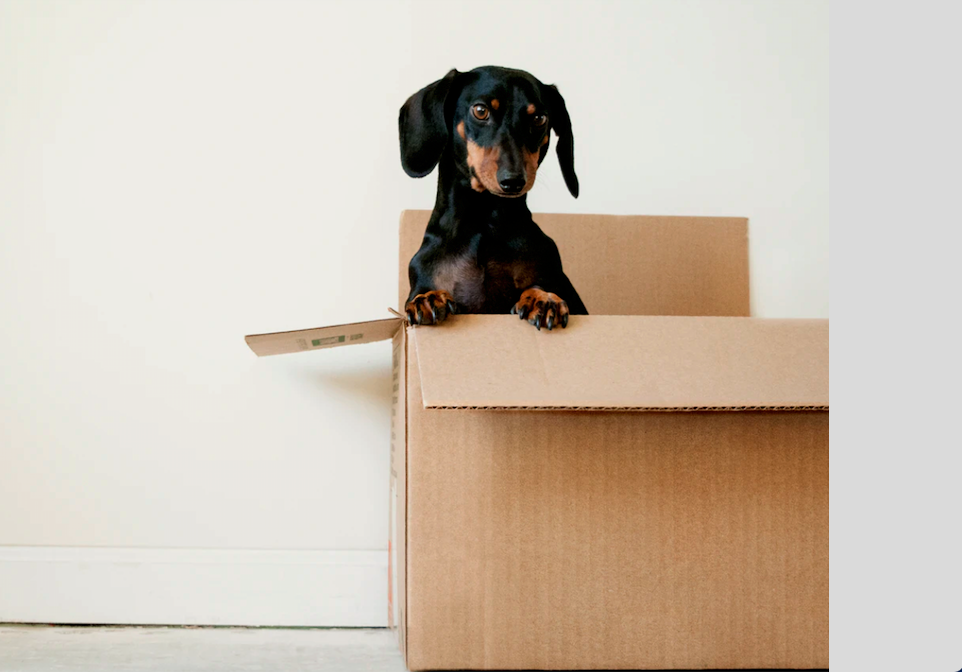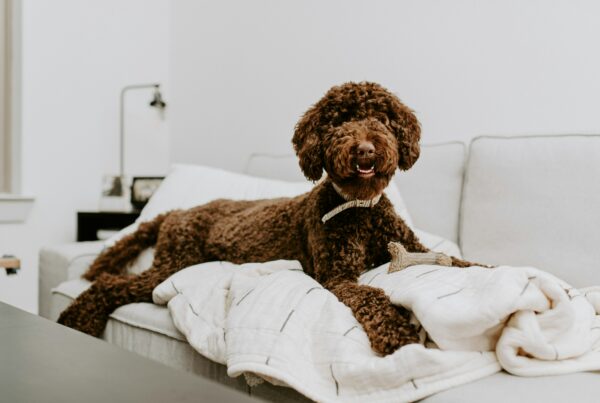Think back to how you felt moving from one house to another when you were a child. No doubt, the feeling was rather surreal and a little scary. Much in the same way, your dogs feel scared when you are moving, and they don’t understand what might be happening at the moment.
As such, they might react violently if you aren’t careful. Here in this article, we will provide the best tips on how to move without scaring your dogs.
Talk to Them About the Move
No, your dogs are not going to understand your every word, but your calm voice will help calm them. When moving, if there is one essential tip that you need to remember, it will be that, you need to stay calm.
No matter what happens, be it horrible movers or a slip up with luggage, don’t get angry in front of your pets. Seeing you upset will also upset them. So, try your best to stay calm, and if need be, put up an act of calmness in front of your dogs.
If you are concerned that seeing strangers will alarm your dogs, hire a good moving company who is well trained in moving families with pets. Do a little searching on Google to see what you can find. You can also ask your family and friends for help.
Where you are moving to and from is also going to have an impact on your dogs. If you are moving to a big city like New York, then contact a moving company that specializes in moving to or from big cities. Any good NYC moving company will know how to behave in front of your dogs.
Prepare them for the move
Diet
Be sure to change their diet by reducing the portions you give them by a third a few days before moving. This will help them travel on a light stomach and ensure they don’t vomit on the trip.
As the trip can be bumpy no matter which mode of transport you are taking, you need to ensure this step for your dog’s comfort and for your peace of mind.
Collar ID
Another matter that you need to take care of, even if you don’t move, is to have a microchip placed on your dog’s collar. You should also put an ID tag with your dog’s name and your contact information. In the case that your dog becomes overwhelmed and runs away, don’t lose hope.
The microchip will help locate your dog. And if someone else has already found them, with the information you provided on the ID tag, they will surely contact you.
Airplanes
If you are planning on moving a long distance and need to ride on an airplane, this tip might help you a lot. Take your dog to a car wash. While the car is moving through the water, calmly talk to your dog; you need to make your dog feel calm during the process.
This will help them associate calmness with this sort of experience. When they are on an airplane, they will think of the experience as the same and remain calm.
Vaccinations
This will become a necessity when you are moving to another country. Some nations even require your pets to be vaccinated and for you to provide the documents to prove to them before you are allowed into the country.
Talk to your vet and ask them what the necessary things are, be it documents or medical checks. Even if they don’t know all of the details, they will point you in the right direction.
When you are done with the move, these new documents will be helpful for your new vet to get accustomed to your dog. They will have the essential information ready for them.
Boxes
Cardboard boxes are not usually lying around the house. If for some reason you did have ones lying around, then lucky for you, the move will be a lot easier.
If you are like most people and your dogs don’t usually see these boxes, then place them around the house a week before the move. This will help them get accustomed to the boxes.
If they will be making the move in a carrier, then be sure to place their favorite things inside with them. Also, be sure to give them an ample amount of treats, but not too many, as they might vomit if they become full.
Moving Day
On the moving day when your dog sees the movers taking away the furniture from your house, they will no doubt take it as a threat. They are seeing strangers invade your home and take away your belongings; this will become a frightful scene for them.
Try to get a relative or a friend to take care of them for a day, while the movers are in the house. If this is not possible for you, then place them in a room away from any noise and strangers so that they remain calm.
When all the things have been loaded into the vehicle, it is then that you should call your dog to get into the car. Doing so beforehand can cause them to become too hot staying in the car.
Also, remain vigilant to check whether all the passing trees or street lamps are making them anxious. If that is the case, cover their crate with a thin blanket, making sure it still lets a good amount of air through.
Once a few hours have passed, you will see that they will become calm, and you can remove the blanket.
New Home
Once you have reached your new home, do not let your dog roam free right away. Many hazards such as broken glass, cleaning products, or pesticides such as rat poison may be left behind. Investigate the house to see if it is safe for your dog.
When doing so, make sure to take note of any holes or spaces inside cabinets or closets the dog may burrow into.
After you have done the above, then let your dog out and give him all the time he needs to sniff out his new home.
When the movers come in with all of your belongings, make sure to do the same as you did when moving out. Keep your dog in a closed-off room away from the movers and the noise.
Familiarity Will Help
If possible, try to arrange the furniture to recreate their favorite places just as they were in the old house. This will give them an anchor in their new surroundings.
Conclusion
Your dog will need time to adjust to the new settings. Even after doing all of the above, if you see that your dog is not calm, don’t lose hope; remain patient and give it time. As with all things, time will settle things down, and your dog will soon start to act normal in their new home.




